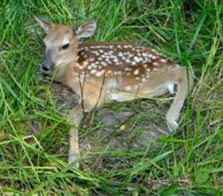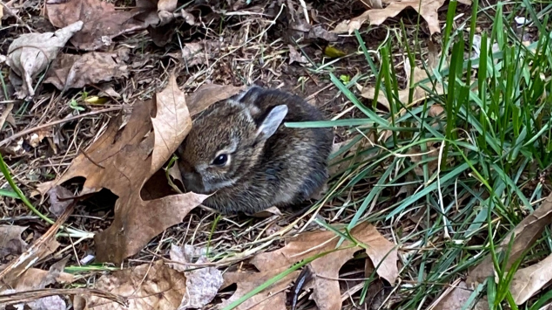
INDIANA– As spring arrives, Indiana residents will likely encounter young wildlife. While the instinct to help may be strong, the Indiana Department of Natural Resources (DNR) reminds the public that the best course of action is to observe from a distance and let nature take its course.

“Adult animals rarely abandon their young,” the DNR emphasizes. “What may seem like an abandoned animal is often normal care. Mothers frequently leave their offspring to forage for food, and young animals instinctively remain still and quiet while waiting.”
Interfering with this natural process can have unintended consequences. Removing young from their nests or dens can disrupt the animal’s reproductive cycle, and human scent can attract predators. Additionally, wildlife can carry diseases and parasites that pose risks to humans and pets.

Guidelines for Encountering Young Wildlife:
- Observe from a distance: Give wildlife space and avoid approaching young animals.
- Leave them be: Mothers often leave their young alone for extended periods. If a baby is quiet and still, do not assume it is orphaned.
- Return to the nest: If a baby has fallen from a nest or den, gently place it back and leave the area quickly.
- Check before yard work: Inspect your yard for nests or dens before mowing or performing other landscaping activities.
- Assess the situation: Before intervening, consider whether the animal truly needs help. Most young animals do not.
When Intervention is Necessary:
- If an animal is clearly injured, orphaned (mother witnessed dead), or showing signs of disease, contact a permitted wildlife rehabilitator within 24 hours. A list of these professionals can be found on the DNR website.
- The DNR does not provide direct services for orphaned or injured wildlife.
- Always prioritize personal safety when dealing with wildlife.
- Due to the presence of chronic wasting disease (CWD), fawns found in Lagrange, Steuben, Dekalb, or Noble counties can only be given to a permitted rehabilitator in that four-county area.
Chronic Wasting Disease (CWD) Awareness:
The DNR raises awareness about CWD, a fatal disease affecting white-tailed deer. To prevent its spread, residents are urged to avoid handling fawns, especially in areas where CWD has been detected.
Dead Animal Removal:
The DNR’s Orphaned & Injured Wildlife page is not intended to report roadkill or request the removal of dead animals. For roadkill on state and federal highways, contact the Indiana Department of Transportation, and for dead animals on city streets, contact the local public works or sanitation departments. For dead wildlife on private property, contact a wildlife control operator or remove the animal, wearing gloves and double-bagging it for disposal.









.png)











